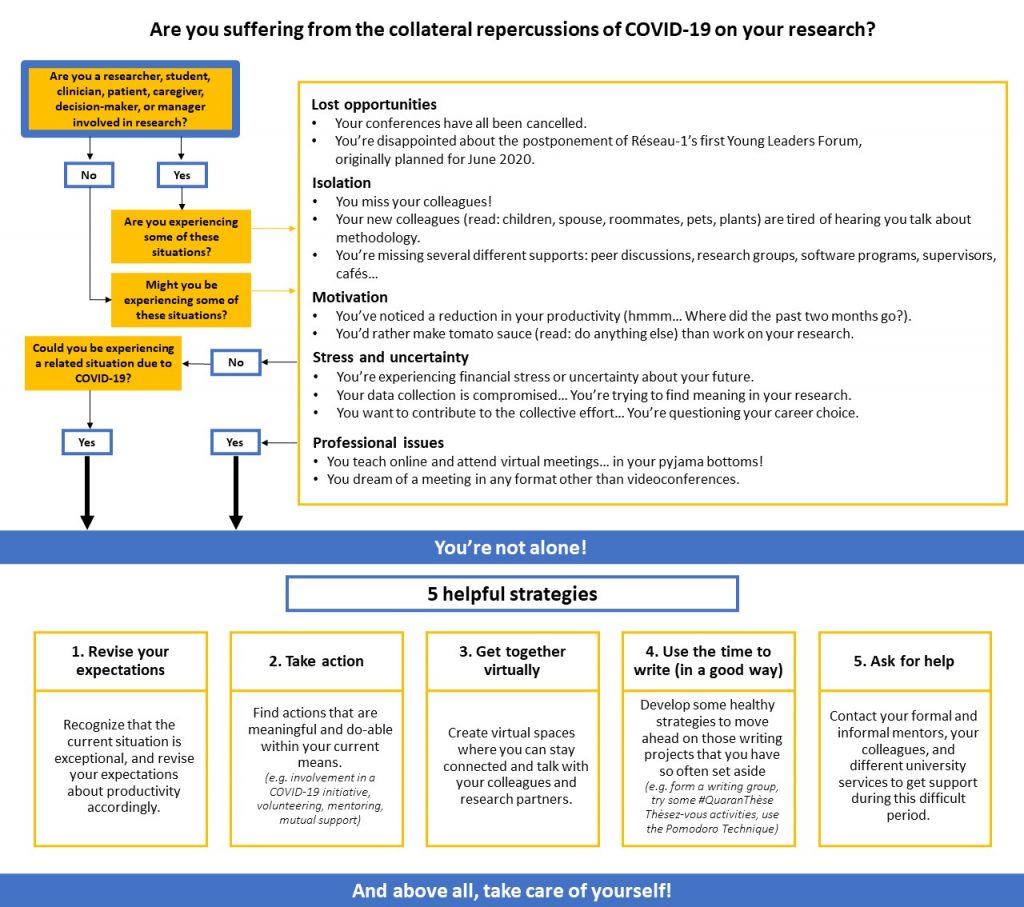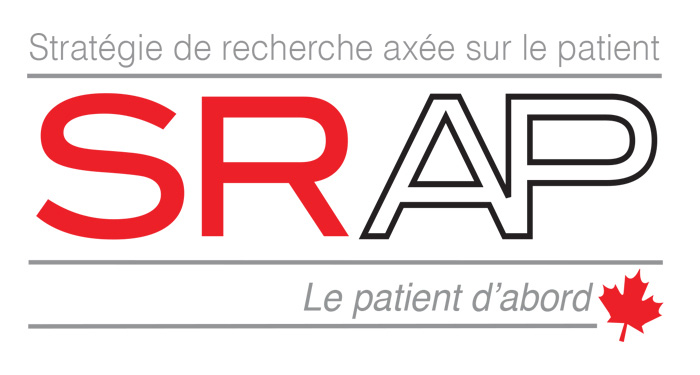Ce texte fait partie d’une série de réflexions sur la première ligne en contexte de pandémie du Réseau-1 Québec. An English version is available here.
Pandémie – émergence de l’incertitude
Début Janvier 2020. Un sentiment d’incertitude apparait aux premières nouvelles de l’infection. SARS-CoV-2? Un nouveau Syndrome Respiratoire Aigu? Les appels-conférences ont rapidement démarré. En Australie, la Chine, c’est tout près. Sur plusieurs dimensions : géographiques, économiques, sociales. Avant la pandémie, la Chine représentait le tiers de toutes les exportations et plus de 45 000 étudiants étrangers dans les Universités australiennes.
Une éclosion de syndromes respiratoires à Wuhan, c’est rapidement un gros problème en terres Australes. Le 1er février, nos frontières étaient fermées à la Chine et dès la mi-mars, également à l’Iran, l’Italie et la Corée du sud. Dès le 21 mars, les frontières étaient entièrement fermées pour ce qui allait s’avérer la majorité de 2020, et est toujours le cas en ce début de 2021. Il n’y a toujours aucun voyage a l’étranger pour les Australiens, à moins d’obtenir une autorisation de voyage, et elles sont rares.
Au cœur de la mise en place de structures de réponses à la pandémie, le 22 mars, le mandat m’était confié de mettre en place une unité d’intelligence critique pour soutenir nos politiques publiques et de services face à la pandémie de SARS-CoV-2. La réalisation que les décisions à prendre au cours des prochains mois nécessiteraient un regard critique, par une équipe mobilisant des capacités avancées de synthèses de connaissances, d’analyses de données et de mobilisation de l’expertise clinique était à la base de cette décision. Le 26 mars, la COVID-19 Critical Intelligence Unit démarrait ces activités [https://aci.health.nsw.gov.au/covid-19/critical-intelligence-unit].
Big evidence – volume, vélocité, variété et véracité
Tout comme le concept de Big data, la pandémie a généré ce que l’on peut appeler la Big evidence. En termes de volume, plus 100 000 articles scientifiques (environ 4% des extrants scientifiques globaux pour 2020) ont été publiés [Else 2020]. En termes de vélocité, plus de 30 000 articles ont été publiés en prépublication, plusieurs d’abord sur le fil de presse, et les délais entre les études et la publication ont fondu, particulièrement pour les articles portant sur la pandémie. En termes de variété, la nature des articles publiées a changé au fil de la pandémie, les articles de modélisation et sur le diagnostic dominant en début et ceux portant sur les interventions de santé publique et la santé mentale plus récemment. La science (et la pseudo-science) a envahi les réseaux sociaux. Finalement, en termes de véracité, les rétractions scientifiques ont également fait presse, l’émergence de multiples opinions polarises et théories de la conspiration se sont ajoutées à la rareté des études apportant un éclairage contextualisé. Plus récemment, de tels constats portant sur les études autour des vaccins font aussi l’objet de débats.
Un tel rythme, cadence et complexité ont généré des défis importants pour la prise de décision clinique et au niveau des politiques publiques. Le rôle de l’unité que nous avons établie était de réaliser diverses synthèses rapides de la connaissance et la mobilisation des savoirs tacites pour soutenir la décision, de manière indépendante. Nous avons mis en place une équipe de synthèses rapides (dont les travaux étaient produits en moins de 24 heures en début de pandémie), une équipe sur les données empiriques (produisant un tableau de bord digital mis à jour quotidiennement et divers rapports hebdomadaires), un groupe d’intelligence clinique (incluant divers cliniciens académiques) et un groupe d’intelligence en recherche (coordonnant les activités de recherche en soins et services et sante publique) [Levesque et al. 2020].
Fondamentalement, les principes directeurs de l’unité sont : transparence des sources d’information, suffisance dans l’extraction et l’analyse, triangulation des types d’évidence, et transposition en contexte réel. Dans un tel contexte, les produits de l’unité devaient être rapides (souvent produits en moins de 24 heures), assez exhaustifs sans l’être trop, brefs et clairs, apportant un éclairage sur la preuve et non sur le détail. Un des enjeux demeure de produire des avis qui différencient l’absence d’évidence, l’évidence d’absence de preuve, l’évidence de preuves, la transposition de la preuve pour répondre aux questions formulées par les décideurs.
Incertitude comme plateforme de changement – prise de décision clinique et politique publique
Fondamentalement, la pandémie a créé une situation paradoxale sur le plan de la prise de décision fondée sur la preuve. D’un côté, la démonstration scientifique était mince en début de pandémie et de multiples décisions ont dû être prises en contexte d’incertitude, puis l’ampleur du corpus scientifique, et le fait que la science émergeait à un rythme rapide et a rapidement créer une situation ou la preuve était contradictoire, créant un autre type d’incertitude. La preuve changeait dans le temps et variait grandement d’un contexte à l’autre.
La pandémie étant un phénomène dynamique, diverses nations étant à différents stades épidémiques et les mesures adoptées pour contrôler la pandémie étant aussi variables entre contextes, divers résultats contradictoires se sont mis à apparaitre. Par exemple, le port du masque semble efficace dans certains endroits mais pas dans d’autres, les courbes épidémiques suggèrent des facteurs de transmission de l’infection très variables, les effets indirects de la pandémie ne se retrouvent pas partout au même point. Sans compter la variabilité des approches adoptées dans la gestion clinique des cas confirmés et des autres patients.
Un autre paradoxe émergeant porte en soit sur l’incertitude et l’impact de la recherche sur les décisions cliniques et de politiques. Si d’une part la qualité de la démonstration scientifique demeure faible sur plusieurs points, il n’en faut pas beaucoup pour influencer la décision. Si des revues systématiques solides ont habituellement de la difficulté à percer le secteur clinique et l’arène des décisions liées à la planification et aux politiques de santé publique en temps normal, en temps de pandémie, l’appétit pour la preuve, si faible soit-elle, s’est accru. Combinées à de bons mécanismes de communication avec divers groupes cliniques, allant de la première ligne, les soins d’urgences, les services communautaires et les spécialités cliniques, les revues et synthèses effectuées durant la pandémie ont rapidement trouver application dans des guides de pratiques cliniques et organisationnelles dans l’espace de quelques jours à quelques semaines (voir site web des communautés de pratique [page web n’est plus disponible].
La recherche et la dissémination scientifique en temps réel
La pandémie n’a pas qu’influencé comment la recherche a été utilisé dans la planification de la réponse à l’échelle populationnelle ou à l’échelle du système. La pandémie a aussi créé un contexte d’expérience naturelle où la recherche s’est vue intégrée à la prestation clinique ainsi que dans la gestion de la réponse populationnelle. De multiples études de cohortes ont émergé, des recherches en temps réel ont été financées et des méthodes novatrices de collecte de données ont créé divers laboratoires de recherche vivants en temps réel. Les dossiers médicaux électroniques de première ligne sont devenus accessibles grâce aux systèmes d’extraction rapide pour pouvoir monitorer la situation en temps presque réel, en utilisant la première ligne comme sentinelle.
Le système de santé s’est transformé rapidement, particulièrement en ce qui a trait à l’arrêt des procédures électives, une réduction drastique de la demande discrétionnaire de soins, le recours aux technologies de l’information pour les soins à distances et la réorganisation des processus de soins et trajectoires des patients. Dans un tel contexte d’effervescence, capter la transformation par la collecte de données expérientielles est venue complémenter les mécanismes plus formels de recherche en soins et services.
À l’échelle de la prestation clinique individuelle, divers instruments électroniques ont été mis en place pour capter et circuler l’information relatives aux cas de COVID-19, créant une opportunité d’étudier cette cohorte, au-delà des essais cliniques en cours. Nombreux cliniciens ont aussi fait face aux questions de leurs patients concernant la pandémie, puisant dans les travaux quotidiens de l’unité d’intelligence critique pour y apporter réponse, malgré l’incertitude. Discuter de la science et la preuve, de l’incertitude et les débats sur des questions épineuses, à ainsi pris de l’importance dans l’espace clinique.
À l’échelle des décideurs, soutenir une réponse proportionnelle au risque et à l’émergence de la preuve, a nécessité de mettre en place des outils de communications et de diffusion de la preuve scientifique. Les besoins d’intégrer les diverses formes de connaissances et de discuter la force de la preuve scientifique sont devenus partis du quotidien de la décision sur les politiques publiques.
Un nouveau paradigme pour la recherche?
La pandémie a créé un contexte particulier pour la recherche et le transfert des connaissances qu’il serait difficile de générer en temps normal. Le sentiment d’urgence, l’émotion et la complexité de la situation sont en soi uniques. Néanmoins, il faut apprendre de cette expérience et influencer notre façon de financer, planifier et réaliser la recherche pour les phases ultérieures de la pandémie et ce qui adviendra ensuite. Plusieurs chercheurs ont traversé la frontière entre recherche et activisme durant la pandémie. Plusieurs chercheurs se sont transformés en pan-experts, en omni-experts, ayant un point de vue sur plusieurs thèmes qui dépassent nettement les frontières de leur compétence de chercheurs. Mettre en place des mécanismes permanent et rigoureux pour jouer ce rôle, est fondamental. Structurer la recherche et les activités de dissémination scientifique dans l’horizon temporel du clinicien et du décideur est possible, la pandémie nous y a poussé!
La question n’est peut-être plus essentiellement « comment disséminer» mais aussi « comment faire la recherche en contexte réel ». Transposer les opportunités crées par la pandémie, un ennemi commun qui a capté l’attention de tous depuis des mois, ne sera pas facile quand soudainement tout le monde recentrera son attention, chercheurs, cliniciens et décideurs inclus, sur une multitude de champs d’intérêt. La notion de débat et d’intégration des connaissances pour répondre aux questions complexes, est une avenue que notre unité d’intelligence critique explore, pour transposer une structure érigée en urgence, en une structure permanente combinant les mêmes ingrédients et méthodes, dans un contexte péri-pandémique. Le défi est devant nous. Un an plus tard, l’incertitude est encore omniprésente sur plusieurs fronts.
Jean-Frederic Levesque, MD, PhD, FRCP
Président directeur général, Agency for Clinical Innovation, New South Wales, Australie, Professeur adjoint, Centre for Primary Health Care and Equity, University of New South Wales
Références
Else, H. How a torrent of COVID science changed research publishing — in seven charts. Nature 588, 553 (2020). https://www.nature.com/articles/d41586-020-03564-y
Levesque, J-F., Sutherland, K., Watson, D.E., Currow, D.C., Bolevich, Z., Koff, E. Learning Systems in Times of Crisis: the Covid-19 Critical Intelligence Unit in New South Wales, Australia. November 23, 2020. https://catalyst.nejm.org/doi/full/10.1056/CAT.20.0542










